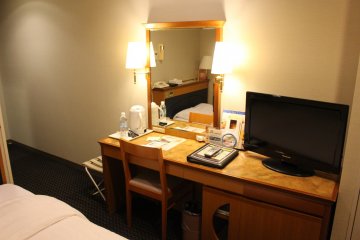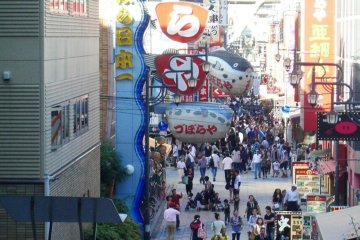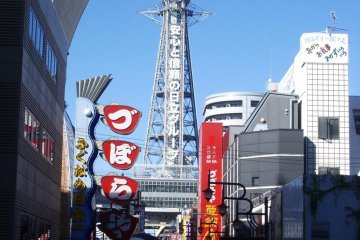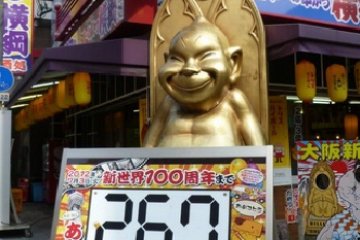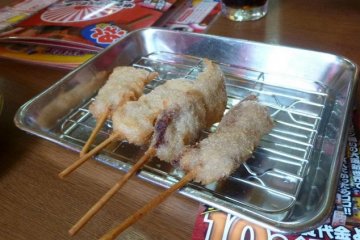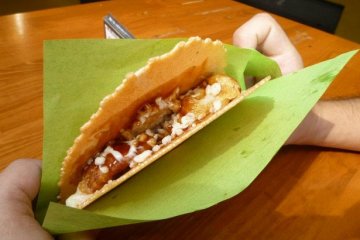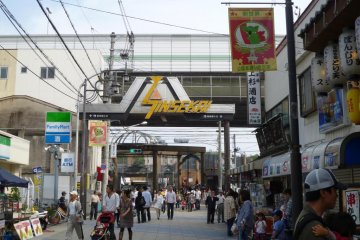Shinsekai (新世界) means New (新) World (世界) in Japanese. This ‘New World’ has been around for quite some time; in fact Shinsekai celebrated her 100th birthday in 2012. Shinsekai gives you a unique, cross cultural kind of feeling. It’s hard to imagine that this place was a large onion plantation with hardly anything around about a hundred years ago. This area was first ‘uncovered’ and developed in 1903 for the 5th Japan Exhibition and Expo. The event that lasted for 5 months was a great success and attracted about 5.3 million people from all over Japan. The expo’s success lead to the creation of a new world in Shinsekai!
The main symbol here is the Tsutenkaku (通天閣) Tower, completed in 1912, symbolizing the birth of a New World. Tsutenkaku basically means “The Tower Reaching to Heaven” which is the landmark of Shinsekai till now. The area was modeled after New York to its south and Paris to its North.
Today, Shinsekai is famous for its colorful and retro neighborhood. Start your journey from Doubutsuen Mae (動物園前) station. The Tennoji Zoo is here, the second biggest in Japan after Ueno Zoo in Tokyo.
From here head straight till you arrive in Jan-jan Yokocho (ジャン ジャン 横丁), a narrow culinary street that welcomes you the retro part of Shinseikai. Beware of cyclists coming towards you while looking out for queer manga shops. Remember to spot a shop with old Japanese men coming together to play Japanese chess. It is interesting to see their serious faces trying to beat their opponents.
After walking past Jan-jan Yokocho, you arrive in Shinsekai Kouen Hondori (新世界公園本通). This area is much wider and more colorful~ Pachinko shops, retro cinemas, shops selling work clothes… and obviously, the Kushi-katsu (串カツ) restaurants!!!
You have not been to Shinsekai if you have not tried Kushi-katsu here. For fried food lovers, this is your heaven! Kushi-katsu restaurants are everywhere. They are also famous for the “nido tsuke kinshi” (二度付け禁止) rule for eating in this area. This literally means “no second dip” referring to the sauce that you dip your Kushi-katsu in. The sauce is normally put in a big square steel bowl and it is shared with other customers. To counter the oily kushi-katsu, you get a free flow of cabbage to have with it, which can be really addictive.
To the observant eyes, you can see a smiling statue of a boy with long ears in front of almost all the shops here. This is the famous Biliken, so remember to rub the soles of his feet as it is believed to bring you good luck!
After a satisfying your appetite, you can sate your senses by heading to Tennoji Park which houses the Municipal Museum of Fine Art. In contrast to the shopping and restaurants street, this is a quiet spot and the art museum focuses on traditional Chinese and Japanese art and Buddhist images. In the evening, head to Tsutenkaku for a great view of Osaka to end a long day in Shinsekai!





